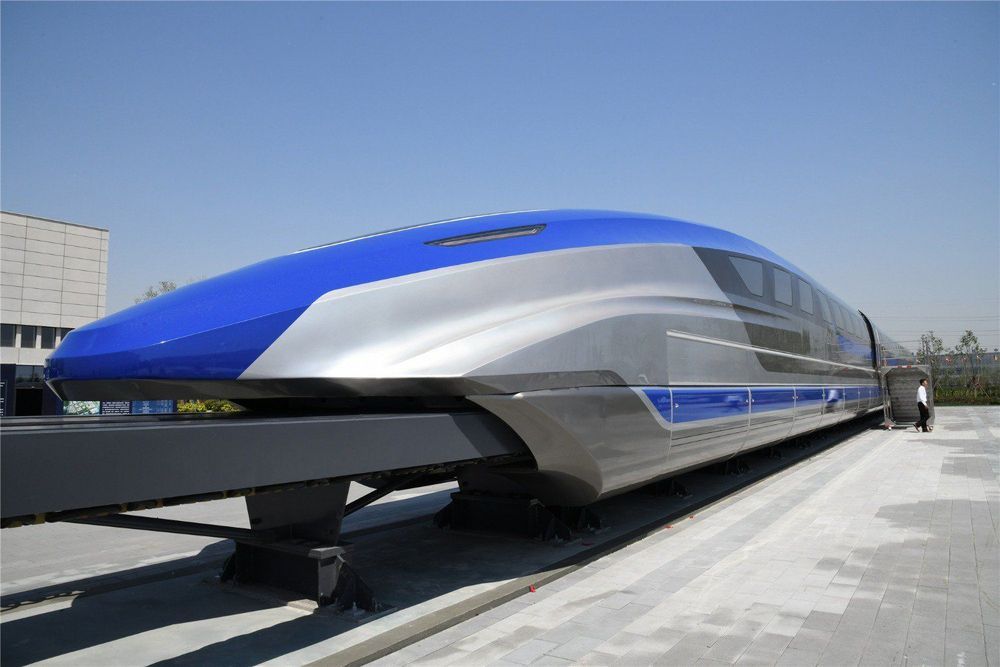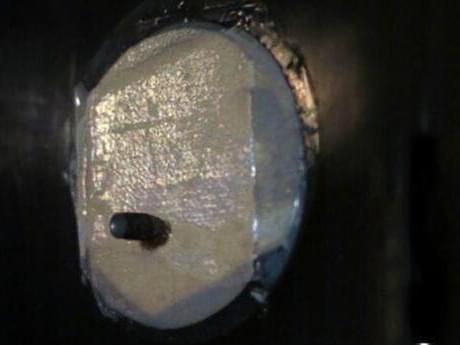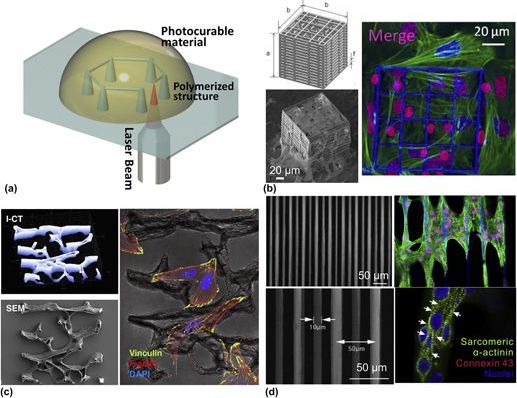
Get the latest international news and world events from around the world.




This Bulletproof Skin is Made of Goat Milk Spider Silk
Jalila Essaïdi is a Dutch artist and entrepreneur focused on biotech applications of spider silk, which she makes using the milk of genetically engineered goats.
Spider silk is one of the strongest materials in nature. Jalila Essaïdi had her curiosity piqued when she read about the work of Randolph Lewis, a Professor at Utah State University, who had developed a method to create synthetic spider silk from goat milk.
“We genetically engineered the goats so that they produced a spider protein in their milk. We then purify that protein from the milk and spin it into fibers,” Lewis told CNN in an interview.
[1801.08635] Laser induced topological cues shape, guide, and anchor human Mesenchymal Stem Cells
Abstract: This report focuses on the effect of the surface topography of the substrate on the behavior of human mesenchymal stem cells from bone marrow (MSCs) before and after co-differentiation into adipocytes and osteoblasts. Picosecond pulsed laser ablation technology was applied to generate different microstructures (microgrooves and microcavities) on poly (L-lactide) (PLLA), where orientation, cell shape and MSCs co-differentiation were investigated. On flat PLLA, the undifferentiated MSCs showed rounded or elongated shapes, the latter being randomly oriented. On PLLA microgrooves however, MSCs adapted their shape to the groove size and direction and occasionally anchored to groove edges. It was found that adipocytes, contrary to osteoblasts, are highly sensitive to topological cues. Adipocytes responded to changes in substrate height and depth, by adapting the intracellular distribution of their lipid vacuoles to these physical constraints. In addition, the modification of PLLA by laser ablation enhanced the adherence of differentiated cells to the substrate. These findings show that picosecond pulsed laser micromachining can be applied to directly manufacture 3D microstructures that guide cell proliferation, control adipocyte morphology and improve the adhesion of bone and fat tissue.
From: Jose L. Toca-Herrera [view email]
[v1] Thu, 25 Jan 2018 23:56:53 UTC (1,069 KB)


Tiny droplets of early universe matter created
An international team of scientists has created tiny droplets of the ultra-hot matter that once filled the early universe, forming three distinct shapes and sizes: circles, ellipses and triangles.
The study, published December 10, 2018 in the peer-reviewed journal Nature Physics, focuses on a liquid-like state of matter called a quark gluon plasma. Physicists believe that this matter filled the entire universe during the first few microseconds after the Big Bang when the universe was still too hot for particles to come together to make atoms.
The researchers used a massive collider at Brookhaven National Laboratory in Upton, New York, to recreate that plasma. In a series of tests, the researchers smashed packets of protons and neutrons in different combinations into much bigger atomic nuclei. They discovered that by carefully controlling conditions, they could generate droplets of quark gluon plasma that expanded to form three different geometric patterns.

Breaking Down Iron Man’s New Avengers: Endgame Suit
Tony Stark (Robert Downey Jr.) is nothing if not a master innovator. After every single battle he’s had in the Marvel Cinematic Universe, the character has used his book smarts and technical wherewithal to better his suit so that it can defend against any threat the Avengers may run into. That includes the introduction of yet another suit in Avengers: Endgame after his first nano-tech based armor was destroyed in the Battle of Titan that took place in Avengers: Infinity War.
Weta Digital was the team behind crafting Stark’s layered nano-tech armor in addition to the third-act Endgame battle where we saw the majority of its capabilities. Recently, we had the chance to speak with Weta’s visual effects supervisor Matt Aitken, who helped detail what all went into making the latest iteration of Iron Man armor.
“Here in Infinity War, and then subsequently in Endgame, he’s got the Bleeding Edge nano-tech that he’s developed,” Aitken recounts.” And that’s about this idea that the suit is actually made up of these nanoparticles that can kind of form a fluid and move around on the surface of the suit, and reform different weapons, and then kind of solidify and crystallize into a rigid, metal suit. We developed that tech for Infinity War, and then really extended it for Endgame for two particular sequences.”

Zero-Point Energy Nanomagnet Stores Data In Small Spaces
The European research institution Jülich just released new information on “zero-point energy” and its effect on the stability of nanomagnets. If scientists can determine how to magnetically store data, information can be stored in extremely small spaces.
Quantum mechanics becomes important when we’re talking about small spaces, such as nanometers. Magnetic moments are difficult to stabilize, or point in designated directions. A specific direction corresponds to effectively storing data.
In order to save data, the magnetic moments of atoms in constant motion must be counteracted by energy barriers, which is dependent on the material used. Otherwise, the magnetic moments change and any information saved is then lost.